Has it really only been 10 years? As the Wild Atlantic Way reaches the big one-zero, there is a near unanimous sense that it’s been an unqualified success, but in the early days not everyone was convinced. Some derided the brand as an empty marketing strategy, while others dismissed the new signposts with the wiggly lines as an eyesore.
Everyone is entitled to think what they like about the signposts, but there’s no denying that even as marketing strategy, the Wild Atlantic Way has delivered plenty. As for those signs, for many they’re a cohesive invitation to wander and wonder at the edge of the world.
Karen Coakley of Kerry Food Tours, which runs foodie tours in south Kerry and the Beara Peninsula, was an early adopter. “[L]ike everyone else I was curious about the signs and the money being spent, but I have to say that very early on they started to make sense and I would have felt a little sense of pride. From the outset it felt positive and like something good was happening and that we were part of something much bigger, from the tip of Donegal to furthest point of West Cork. It gave a feeling of connectivity and of being included.”
The brand was devised by Fáilte Ireland to mitigate the lingering effects of the global financial crisis, which according to Miriam Kennedy, head of the Wild Atlantic Way, had “decimated” tourism in the west.
“At that time, people were leaving in their droves from coastal communities, and many businesses were closing,” she says. “In some areas, the tourism season was only six weeks [long] and there was a feeling that if we didn’t do something significant now, tourism in the west might never recover.”
The results are overwhelmingly positive: one million more international visitors in 2019 than in 2014. A flourishing tourism industry that supports 80,000 jobs and is worth €3 billion to the economy. The Wild Atlantic Way accounts for two-thirds of all revenue generated by out-of-state visitors, and as it celebrates its 10th birthday, 43 per cent of all domestic trips taken in Ireland will make their way to somewhere along the route.
One can argue that tourism would have recovered regardless, but the Wild Atlantic Way has done more than just bring visitors to explore Ireland’s scenic heavy hitters. The 2,500km-long route is marked by 188 “discovery points” (marked by those rust-coloured signs that look vaguely like a gallows and are often referred to as “rusty gibbets”; build it and they’ll make up a funny name for it) that artfully tempt travellers away from crowded hotspots and into the wild heart of Ireland’s coast.
By spotlighting lesser-known sights alongside the main draws, the Wild Atlantic Way is all about spreading the love (and the economic boost) across quieter nooks. The route serves to unify a thousand different experiences along the west coast, so clambering about Horn Head in northwest Donegal, for instance, has a thematic connection with going for a breezy walk on Inchydoney Beach in West Cork.
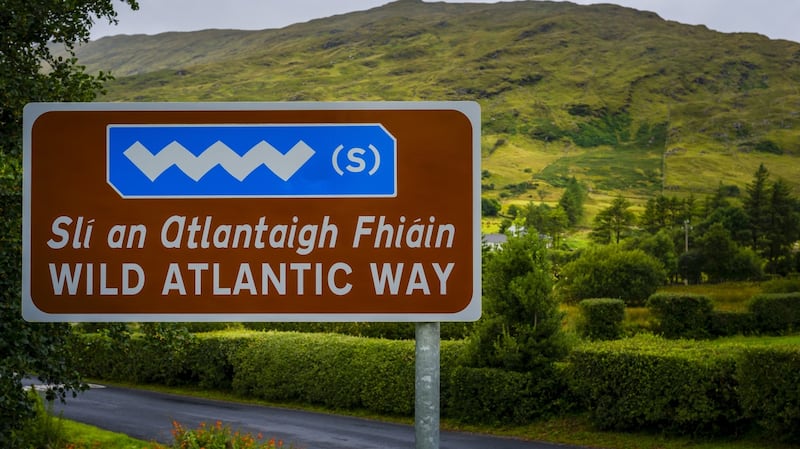
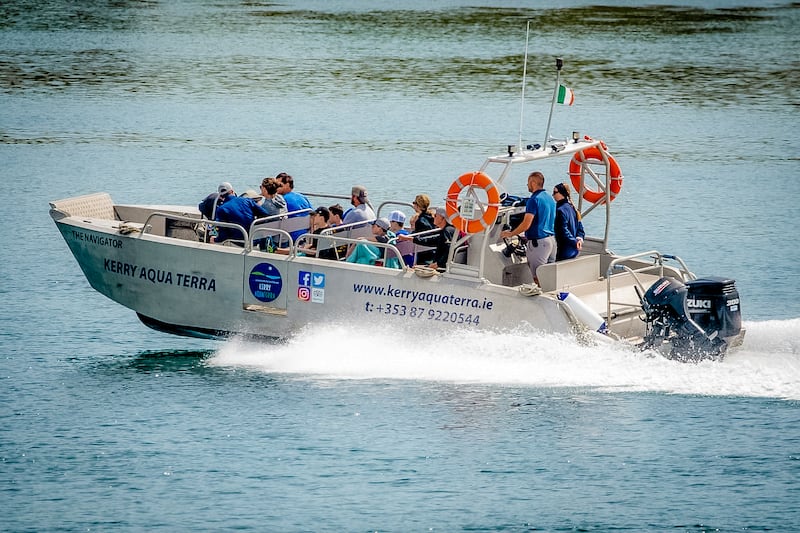
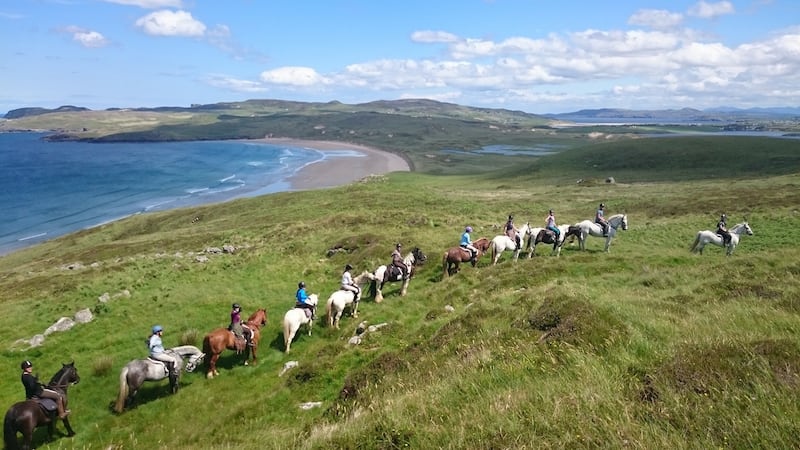
As a result, small towns and rural areas along the route have experienced a renaissance thanks to the influx of visitors. “The Wild Atlantic Way has played a significant role in shaping and growing our boat tour business,” says Elizabeth McCooey, who operates Aqua Terra Boat Tours on Valentia Island with her husband Brendan Curtin. “[The route has been a] game changer, offering endless opportunities to craft unique and authentic experiences in South Kerry.”
Arnolds Hotel in Dunfanaghy, Co Donegal, has been in business for more than 100 years, but the Wild Atlantic Way has made a huge impact on it. “I took over the business 10 years ago,” says manager Aisling Arnold-Kelly, “and we were opening on St Patrick’s Day and closing after Halloween. As a result of the Wild Atlantic Way, we are now open six months full-time and five days a week in the off-season, from November to February, which has a huge impact on staff retention and, for an old building such as ours, it’s fantastic to be able to keep it open and aired.”
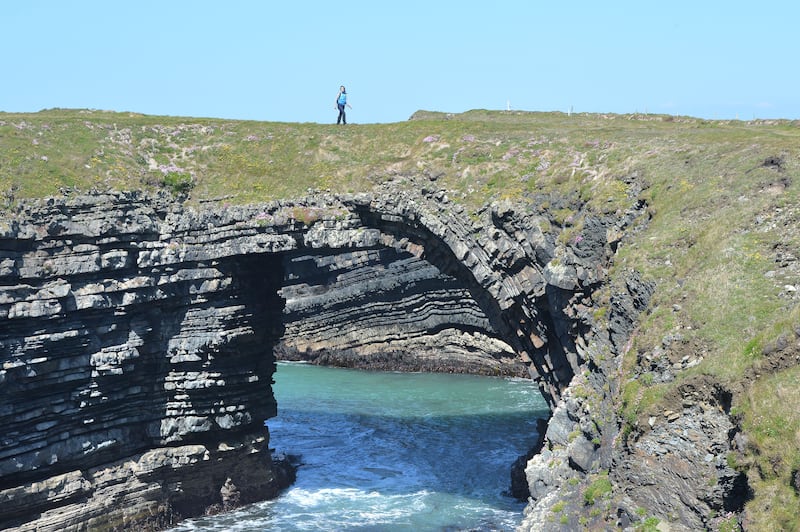
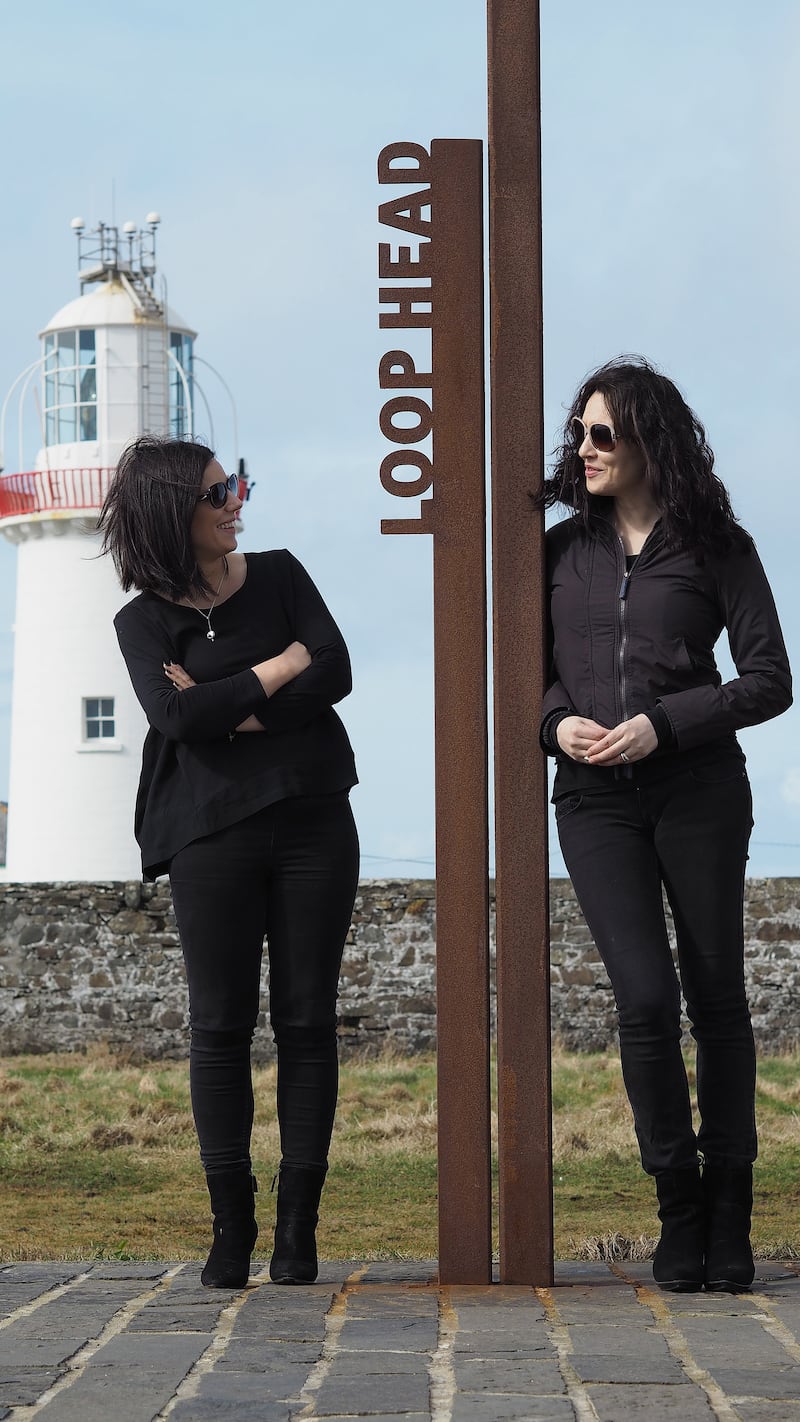
Loop Head, at the tip of a thin peninsula jutting out into the Atlantic in southwestern Co Clare, has an end-of-the-Earth feel to it. About 4km east of the lighthouse is the Kilbaha Gallery, a contemporary art space owned by Liz Greehy and Ailish Connolly. For them, the designation of Loop Head as one of the Wild Atlantic Way’s signature points has been hugely important.
“There was definitely an increase in focus and attention on our area,” says Liz. “Both domestic and international visitors were intrigued by the concept of the [Wild Atlantic Way]. Many previously lesser known spots of extreme beauty, up and down the [west coast] were now suddenly being brought into sharp focus, by virtue of their considered inclusion along this special route.”
It might be 10 years old, but in tourism terms, the Wild Atlantic Way is still a relatively young brand. Which means there are still some growing pains. One of the key challenges confronting tourism authorities is visitor dispersal, especially along the route’s northern half, which includes parts of Connemara and all of counties Mayo, Sligo and Donegal.
Along the southern half of the route – namely south of Galway city down to Kinsale in Co Cork – there are ongoing issues around visitor dispersal, but mostly on dispersing them more widely throughout the region and discouraging the kind of “pile in, pile out” tourism that puts a strain on local communities.


Dara Hogan of Burren EBike Adventures in Kinvara, Co Galway, is concerned about the influx of day-tripping bus tours that solely congregate on the big attractions, such as the Cliffs of Moher.
“I’d love to see tours that spread the visitors around the region without them needing to depend on a car,” he says. “Improved public transport and some creative itineraries would be a great help to smaller villages like Kinvara, with [its] artisan cafes and shops.” Other operators point to problems caused by summer congestion and an over-reliance on bus tours.
Despite its success, the Wild Atlantic Way has also struggled to fully conquer the challenges of seasonality. The route’s popularity peaks dramatically in summer, leaving other seasons languishing with underutilised potential.
Critical issues include a lack of off-season infrastructure, limited winter-ready attractions and, despite repeated attempts by tourism authorities, a failure to fully the land the marketing message that entices visitors during the colder winter months. The result is an over-reliance on a short summer season, which leads to strains on local infrastructure and the risk of environmental degradation, which impacts the long-term sustainability of the regions.
These concerns are felt throughout the Wild Atlantic Way. As a member of the Loop Head Tourism Network, the Kilbaha Gallery has long been active in encouraging a more sustainable ‘slow tourism,’ which, Liz says, was perfectly aligned with the ambitions of the Wild Atlantic Way.
[ Wild Atlantic Way walking path ‘could be Ireland’s Camino de Santiago’Opens in new window ]
“One of the really appealing factors was that the overriding thrust was one of ‘maintaining the pace of community life’,” she says, but she believes that tourism authorities need a “renewed focus on the importance of supporting the actual communities and businesses who are hosting these [Wild Atlantic Way] visitors. The continued ‘buy-in’ needed at community and business level is vital in order for [the route] to remain a significant tourism offering.”
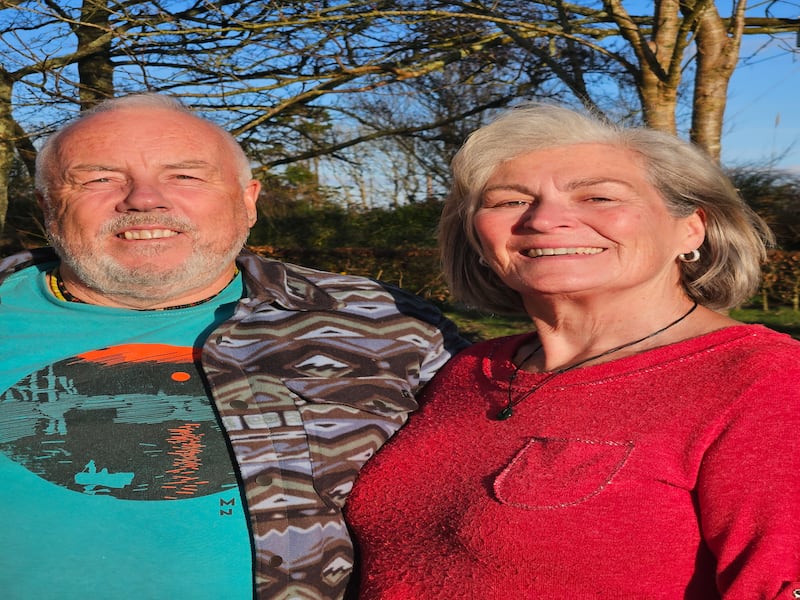
These frustrations are felt throughout the Wild Atlantic Way. For Brendan Curtin, a big concern is the lack of accommodation in rural areas, while for Jim and Maria Kennedy, owners of Atlantic Sea Kayaking in West Cork, the problem is around a lack of facilities such as toilets and local transport. “In our area, the lack of restaurants open Sunday, Monday and even Tuesdays is a problem,” says Jim.
For Karen Coakley, the main ambition should be “a year-round approach. There is a magic in walking the hills in the winter and sitting in a pub by the fire after ... we need to learn to look on winter as the time for doing this.”
Fáilte Ireland is not deaf to these concerns. Its development strategy has identified six primary objectives, including increased seasonality, protecting the cultural authenticity and “wildness” of the route, and assisting the industry to grow and create sustainable jobs in local communities.
[ Keem Bay named in Lonely Planet’s 100 best beaches in the worldOpens in new window ]
The next five years will see a €70 million investment that will include big projects such as Fort Dunree on the Inishowen Peninsula in Donegal and the restoration of Westport House, as well as a new master plan to tackle over-tourism at popular sites such as the Cliffs of Moher.
There will be no birthday celebrations to mark the Wild Atlantic Way’s tenth birthday, but the ambition is clear. “By 2027,” says Miriam Kennedy of Fáilte Ireland, “the Wild Atlantic Way will be in the top five touring routes in the world”, sharing the billing with the likes of the Pacific Coast Highway in California and South Africa’s Garden Route. Not bad for a bunch of wiggly lines.











